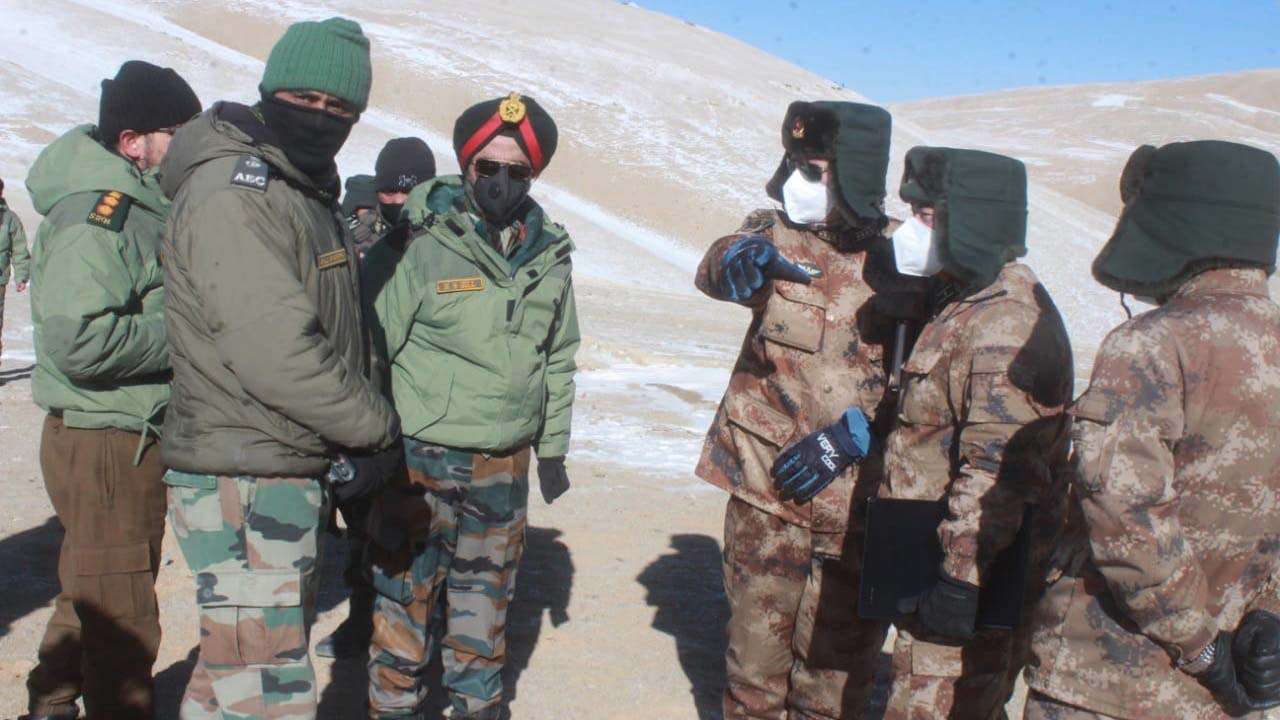
Pic Source: https://cdn.dnaindia.com
India and China have completed disengagement on the north and south banks of Pangong Tso (lake) in eastern Ladakh as decided at the 9th round of military level commanders talks. Subsequently, the 10th round of Corps Commander level talks were held on 20 February 2021 to discuss pullbacks from other friction areas.
Disengagement was fully complete and had been jointly verified by both sides. In line with the agreement, all land forms have been restored to that existed before April 2020.As per the agreement the next commander’s talk is to be held within 48 hours after the completion of withdrawal from the lake. The process started on February 10, with tanks and mechanised columns pulling back initially from the south bank.
With disengagement now complete, a moratorium on patrolling by both sides in the Pangong Tso area has come into effect. To ensure that there is no violation of the agreement by China, there is monitoring by unmanned aerial vehicles (UAV) and cameras have been installed at several locations, the entire area is visible from multiple Indian heights.
On the north bank, Chinese troops have withdrawn to east of Finger 8, while Indian troops have moved back to the Dhan Singh Thapa post near Finger 3. As per the agreement, patrolling would be resumed only after diplomatic and military talks between the two sides are held to arrive at an amicable solution.
Defence Minister Rajnath Singh had informed Parliament that both the countries would remove deployments along the Pangong Lake in a “phased, coordinated and verified manner”. Videos showed People’s Liberation Army (PLA) troops dismantling tents and bunkers and moving equipment in vehicles. A large number of Chinese soldiers are seen walking down a hillside to board trucks.
According to reports, China has withdrawn 130 to 140 tanks, 30 artillery guns and some 2,000 troops. From Pangong North Bank, 30 artillery guns and some 4,000-5,000 troops were removed during the disengagement process.
It has been reported that the de-induction of troops is “gathering pace”, and the entire exercise finished by 19 February. The field commanders of both the sides were meeting almost on a daily basis for the disengagement process, which was finalised following nine rounds of high-level military talks.
The other major friction areas between the two countries are Gogra, Hot Springs and Depsang Plans. The focus has been on complete disengagement from the friction points at Gogra and Hot Springs. Some pullback had taken place at Patrolling Points (PP) 15 and 17A in Gogra and Hot Springs, and the process stopped after the developments on the south bank of the lake in end-August last year.
The 10th round of Corps Commander-level talks between India and China that began on 20 February in Moldo on the Chinese side lasted for over 16 hours. The Indian side was led by 14 Corps commander Lt General PGK Menon and the Chinese side was led by South Xinjiang Military District chief Major General Liu Lin. The dialogue also included additional secretary (East Asia) Naveen Srivastava from the external affairs ministry in the Indian delegation.
India asked China for faster disengagement at Gogra, Hot Springs and Damchok areas, while asserting the need for Chinese soldiers to stop blocking Indian patrols in Depsang Plains to de-escalate the overall tensions in eastern Ladakh. There were “no differences as such” between India and China in “completing” the stalled disengagement at patrolling points (PPs) 15 and 17A in the Hot Springs-Gogra-Kongka La area.
In a joint statement – “The two sides agreed to follow the important consensus of their state leaders, continue their communication and dialogue, stabilise and control the situation on the ground, (and) push for a mutually acceptable resolution of the remaining issues so as to jointly maintain peace and tranquility in the border areas.”
The two sides also agreed to resolve outstanding issues at friction points on the contested LAC in a ‘steady and orderly’ manner. They also unanimously agreed that the Pangong Tso disengagement provided a ‘good basis’ for resolving pending problems.
The major trouble spot remains strategically located Depsang Plains or “Bulge” area, the table to plateau located at 16,000 feet, which has been a “source of constant friction” since 2013. While the region provides India access to Daulat Beg Oldie (DBO) airstrip and the critical Karakoram Pass in the north, it is also close to China’s Western Highway G-219, which connects the Tibetan Autonomous Region of Xinjiang.Both India and China have overlapping claims in the Depsang area, with the later claiming as much as 972 sq. km of territory.
With India and China agreeing to restore status quo ante on the LAC, a meeting between National Security adviser Ajit Doval and Chinese foreign minister Wang Yi, both special representatives on boundary resolution will soon take place to sort out differences in perception over the undefined border. The likely date for the meeting is yet to be mutually decided.
While the tenth meeting between the military commanders took place on 20 February, the back channel talks between the special representatives have ensured no side will unilaterally alter the status quo along the LAC and the status quo will be restored on all other friction points. Doval and Wang had a video conference on June 7, 2020 and have kept in touch with external affairs minister S Jaishankar.




